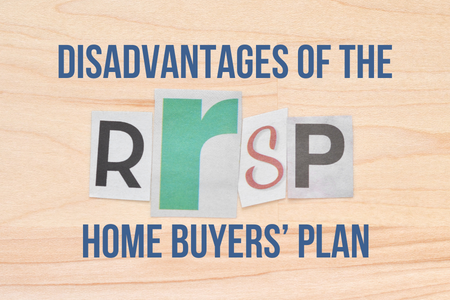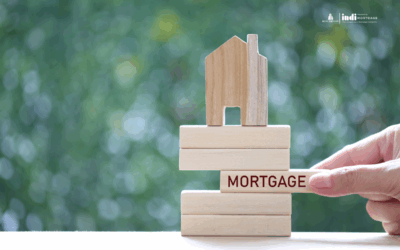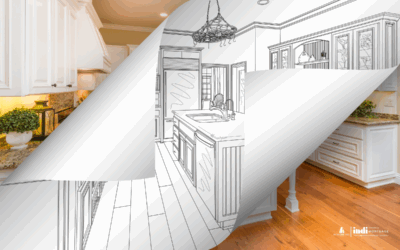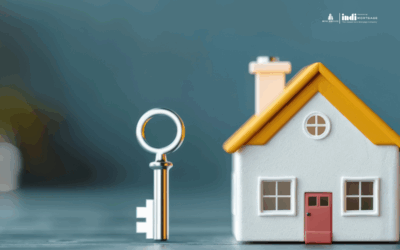Welcome To Our Mortgage Educational Blog About:
Disadvantages of The RRSP Home Buyers’ Plan

The internet is full of information about RRSP Home Buyers’ Plans. There is, however, an information gap when it comes to the disadvantages of the plan.
This begs the question: Is an RRSP Home Buyer’s Plan a good idea?
This article aims to explain the disadvantages of the plan and whether or not it is a good reason to prevent you from registering for one.
As a first time home buyer, you should be aware of these disadvantages before transferring funds to buy a house.
That said, let’s first define what the plan is.
What is a Registered Retirement Savings Plan (RRSP) Home Buyers’ Plan?
The RRSP Home Buyer’s Plan is a popular program that allows first-time homebuyers to withdraw up to $35,000 from their RRSP and use it as a down payment to purchase a home for themselves.
The money is a loan to yourself and should be repaid back into the RRSP over a predetermined time (15 years).
One good thing about the plan is that it is also inclusive of disabled relatives. Therefore, if you have any disabled family member who you wish to buy a house for, you can manage to do it through your RRSP.
From this, it is evident that the plan is beneficial to many first-time homebuyers, but it also has some disadvantages that may not be immediately apparent. Therefore, before enrolling in the RRSP Home Buyers’ Plan, you should consider the following disadvantages:
Disadvantages of the RRSP Home Buyers’ Plan
1. Repayment within 15 years
The main disadvantage of the RRSP Home Buyers’ Plan is that you have to return the funds to your RRSP within 15 years.
In the second year following the year of withdrawal, you are expected to begin repaying your loan under the Home Buyers’ Plan, and each year, you are required to pay back one-fifteenth of the total loan value acquired.
Get this.
Before making regular contributions to your RRSP, you must pay your annual minimum. Even though these strict repayment rules are standard, they can be pretty frustrating in the long term.
At this point, you might be wondering what happens if you fail to pay your minimum annual fee.
Well, if you fail to do so, you will be taxed on the total amount, and you will have to include the annual amount in your tax return. (Line 12900)
Simply put, if you don’t return the money on time, the law stipulates that the funds be fully taxable.
2. Loss of potential growth in the long run
In the long run, RRSP can be costly. By withdrawing from your retirement savings too soon, you forfeit the potential growth those funds could have experienced had they remained untouched until retirement age.
Funds placed in the RRSP accounts usually grow in intrest over time. That said, imagine the ammount that may have accumulated over the course of 15 years! Its quite a lot.
From this, you see that withdrawing money from your RRSP prevents you from reaping the benefits of compound interest, and it would be wise enough to avoid using your RRSP funds for things you can easily afford.
3. HBP repayments cannot be deducted
Don’t be fooled: HBP repayments are not tax-deductible.
Some people believe that making HBP repayments exempts them from tax. Well, that is wrong.
You still owe money, and you must repay it on time together with the interest. In addition to that, you took deductions when you contributed $35,000 to your RRSP. So, you will still have to pay taxes on the amount you borrowed from your RRSP, even more if you fail to repay the money you withdrew on time.
Come to think of it, these repayments can be too burdening and do not reduce your task in reality.
Here is why…in an ideal world, if you had all of this money, you could have bought the house of your dreams right away. Therefore, by paying a certain ammount every year, you tend to compromize your finances, which may even end up crippling you!
4. No debt relief and stress
When it comes to RRSP Buyer’s Home Loans, you should not expect debt relief because you are required to repay the loan regardless of your current financial situation.
It makes no difference if you are sick or broke.
Borrowers must begin repaying the withdrawn funds under the RRSP Home Buyer’s Plan once they purchase their first home.
If you do not repay within 15 years, you will face penalties and additional interest charges that could significantly cripple your financial life.
This brings us to the second part. Stress…
Worrying about where the money will come from to make your payments for the next 15 years can quickly wear you down and cause a mental breakdown and stress.
Although the RRSP is a good investment, the payment obligations make it stressful.
According to Debt.org, you are more likely to experience anger, frustration, stress and, worst-case scenario, depression because of debt, or in this case, borrowing.
Being in debt therefore, can make you look down on the house you bought and see it as a barrier to success and happiness.
Conclusion
Now you know everything there is to know about the disadvantages of the RRSP Home Buyers’ Plan.
Therefore, if you are an RRSP First-Time Home Buyer, it is worth it that you know that the plan is an appealing option. However, it has some drawbacks depending on your current financial situation.
On the same note, these disadvantages do not mean that an RRSP is entirely useless. It is also more beneficial than you may think.
From the above facts, you can now determine whether withdrawing from your plan is appropriate or not. Therefore, if you still wish to have a one on one consultation with us concerning the matter, be sure to reach out to me or give me a call! 780-905-6359
We are always at your service to help you fully comprehend the HBP before deciding if appropriate for you or not.
Are you ready to purchase your first home with your RRSP? Reach out to me directly or start your application here: www.sandraforscutt.ca/mortgage-application/
Don’t hesitate to contact us with any questions you may have.
Recent Educational Blogs
25-Year vs. 30-Year Mortgage
June 2025 | 25-Year vs. 30-Year MortgageIf you’re thinking about buying a home, one of the biggest decisions you’ll face is choosing your mortgage’s amortization period. Should you go for the traditional 25-year mortgage or take advantage of the newer, longer 30-year...
Thinking About Flipping a House in Edmonton?
May 2025 | Flip Mortgage ProgramAre you eyeing that “fixer-upper” in Edmonton and dreaming of turning it into a showstopper? House flipping is more popular than ever, and with the right mortgage program, it’s easier to get started than you might think!What is a Flip...
Unlocking the Value in Your Home
April 2025 | Home Equity Unlocking the value in your home can be a smart way to fund major renovations or get a handle on high-interest debt. If you’ve built up equity—the difference between your home’s current value and what you still owe on your mortgage—you may be...



